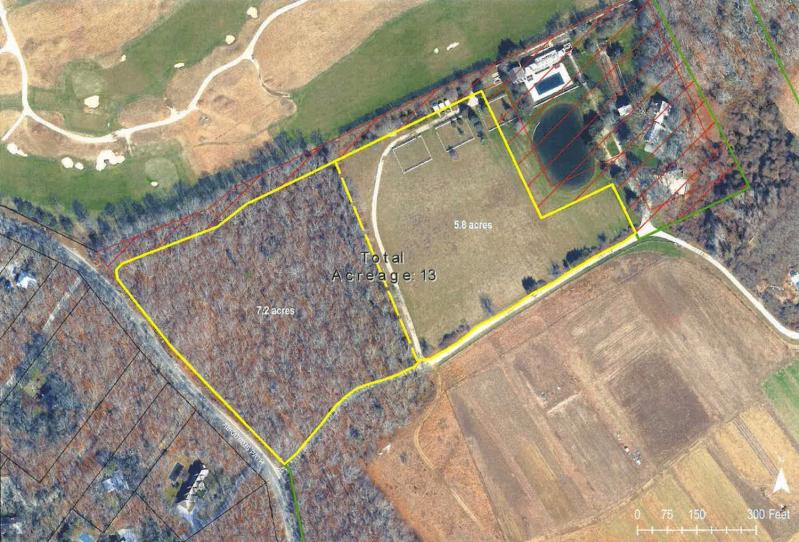The Peconic Land Trust is hoping to transfer just over 13 acres of property in a preserve north of Town Lane in Amagansett to a private estate adjoining it off Abraham’s Path, owned by Fouad Chartouni.
The transfer would require the East Hampton Town Planning Board’s approval of a modification of the parcel’s lot line and — because Suffolk County owns the development rights to the property — approval from the county’s farmland committee, which has the “right to prohibit or restrict the use of the premises for any purpose other than agricultural production.”
The property is part of a much larger agricultural swath once owned by the late Deborah Ann Light and known as the Deborah Light Preserve.
When the matter came before the planning board on Dec. 14, two board members had to recuse themselves: Ed Krug because he is a co-chairman of the Peconic Land Trust’s board of directors, and Ian Calder-Piedmonte because he is a co-owner of Balsam Farms and leases farmland on the Light Preserve from the trust.
If the transfer wins approval, the Peconic Land Trust property will be reduced from 107.8 acres to 94.8 acres, and Mr. Chartouni’s land would grow from 6.96 acres to roughly 20 acres.
This would not be the first time that Mr. Chartouni has acquired land trust property. In 2007, he purchased 1.57 acres from the trust as part of a settlement after he illegally built a 50-foot-long brick wall on the trust’s property.
While 7.2 of the 13 acres are wooded, six acres are grassy and flat. In the past, Mr. Chartouni has leased the flat portion of the land from the trust for his horses. It is currently mowed.
John v.H. Halsey, director of the Peconic Land Trust, wrote in an email that, “The farmland portion of the property does have agricultural value. It’s not the best for row crops compared to the farmland to the south because of the presence of stones. It was used for equestrian purposes for a number of years. It is well-suited for pasture.”
Mr. Chartouni was once a member of the Peconic Land Trust president’s council, but in 2017 sued the trust and the county’s farmland committee and its division of planning and environment seeking to overturn approval for a barn the trust built on farmland adjoining his property. According to Linda Margolin, a lawyer representing Mr. Chartouni, he objected to the barn “because it had never received site plan approval” from the planning board. According to an article in The Star at the time, the trust got a building permit for the barn and put it up “before the Building Department determined that an application should have been made to the planning board for site-plan review.”
As part of the barn’s eventual approval on Nov. 6, 2019, Ms. Margolin said “landscaping was done to provide visual insulation for Mr. Chartouni.”
Mr. Chartouni has owned 301 Abraham’s Path since 1986.
The land in question was part of a gift given by Ms. Light, a founding member of the Peconic Land Trust, who purchased the 30 acres that later became Quail Hill Farm in 1967. Between 1989 and 1995, Ms. Light donated 190 acres of adjacent farmland to the trust.
It is in a town agricultural overlay district. The development rights were purchased by Suffolk County in 2006 for $6 million, with $3 million contributed by the United States Department of Agriculture, under its Federal Farm and Ranch Lands Protection Program.
Ultimately, Suffolk County’s farmland committee will review the application and then make a recommendation to the Suffolk County Legislature.
While the Peconic Land Trust says the land is not prime farmland, the Suffolk County soil maps indicate otherwise.
Mikael Kerr, the county’s farmland and open space coordinator, said, “We are expecting a subdivision application,” but that, “The assumption is if the county purchased the land and stripped it of development rights that it’s good for agriculture. Unless someone provides some details that it’s not good for agriculture, but to my knowledge, that’s never happened.”
“There is zero development potential” for this property, said Ms. Margolin. “I can’t conceive of a more benign application.”
“It’s simple at face value, but there’s a complicated history with development rights and litigation,” said Eric Schantz, the assistant planning director for the town, counseling the board last month.
A memo prepared by the Planning Department on the lot-line modification notes, “The applicant has indicated that the transfer is based on a settlement agreement among the parties (including Suffolk County) in a litigation.”
However, at the planning board meeting, after a question by Randy Parsons, a planning board member, Ms. Margolin said the land was not part of a settlement and instead was a straight sale.
Mr. Halsey, in an email, said, “This lot-line modification is a condition of the sale of the 13 acres to Mr. Chartouni. There will be no sale unless and until there is a lot line modification. The land has not been sold.”
The sale of the land to Mr. Chartouni, in theory, provides the trust with more money to preserve agricultural land deemed superior to the 13 acres. Richard Whalen, an attorney representing the Peconic Land Trust at the meeting, said it is “getting a substantial amount of money that will enable it to do other things.”
However, while Mr. Halsey wrote, “Our intent is to use the funds within East Hampton Town for acquisition and stewardship purposes,” there is no guarantee that the land preserved with funds gained from the sale will be in East Hampton.
Mr. Halsey would not comment on the price Mr. Chartouni offered for the property.
“From the perspective of the East Hampton Planning Board, we’re trying to make sure as much protected farmland remains available to farmers as possible,” said Mr. Parsons.
“It shows up as prime agricultural land on soil maps. It’s clearly flat land. The golf course to the north used to be corn fields. Then you have all this agriculture on the other side. I don’t know why it wouldn’t be suitable for some sort of agricultural production,” he said.
“We could ask young farmers if they’d like to farm it. I think they would.”
“It’s not clear this is a good thing for East Hampton agriculture,” Mr. Parsons continued. “The trend is when wealthy landowners acquire farmland, they tend to make it part of their estate, no longer making it available for agricultural production.”
Samuel Kramer, the board chairman, wanted to consider placing a conservation easement on the wooded portion of the land along Abraham’s Path. “I think it would be hard to be farmed there,” he said. He also questioned the legality of a man-made pond on Mr. Chartouni’s property.
“I think we can go forward with the application,” he said, “but I would like to send it to the Building Department for a determination on that pond.”




